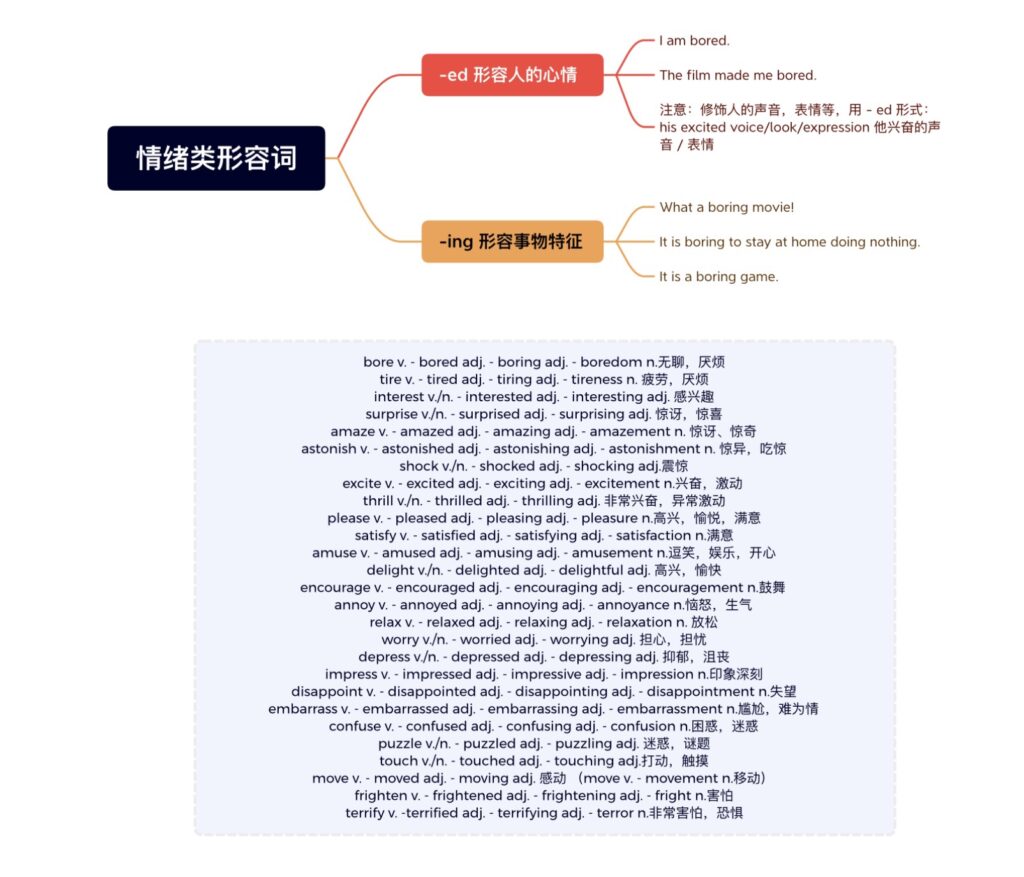
情绪类形容词:-ed形容人、-ing形容物

基本含义 在英语中,ed和ing结尾的形容词通常用来描述人的情绪或感受。 一般来说,ed结尾的形容词通常用来描述人的状态或感受,而ing结尾的形容词则用来描述引起这种状态或感受的事物。 例如,"I am bored"中的"bored"是ed结尾的形容词,表示我现在感到无聊;而"I am boring"中的"boring"是ing结尾的形容词,表示我…
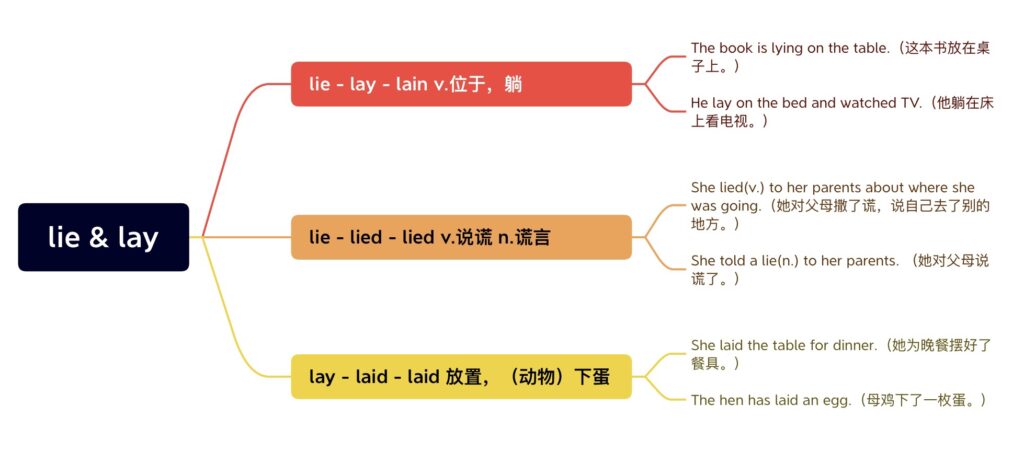
位于 躺 说谎 lie & lay 放置 下蛋

含义与用法 lie 和 lay 是两个常见的动词,它们的含义和用法有所不同。 lie lie 有三种基本含义: 位于:动词,指某物或某人所处的位置。 躺:动词,指身体平放或斜靠在某物上。 说谎:动词或名词,指故意说不真实的话。 lie (位于、躺)的过去式是 lay,过去分词是 lain。 lie(说谎)是规则动词,过去式是lied,过去分词是 l…
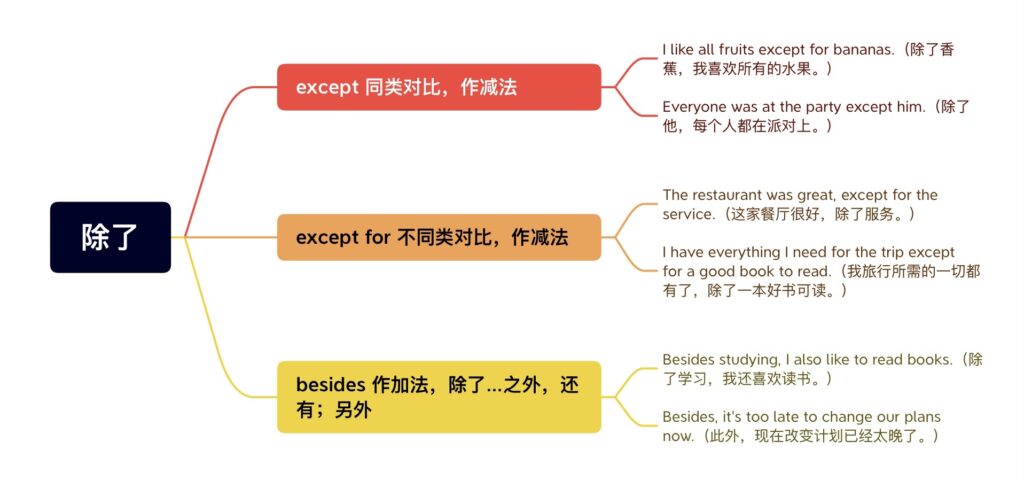
“除了” except, except for, besides

except, except for, besides 的区别 Except, except for 和 besides 都有“除了”或“除去”的意思,但它们在使用上有一些区别。 Except Except 是一个介词,用于”同类对比“,表示除了某个人或物以外,其他人或物都包括在内,。例如: I like all fruits except for…
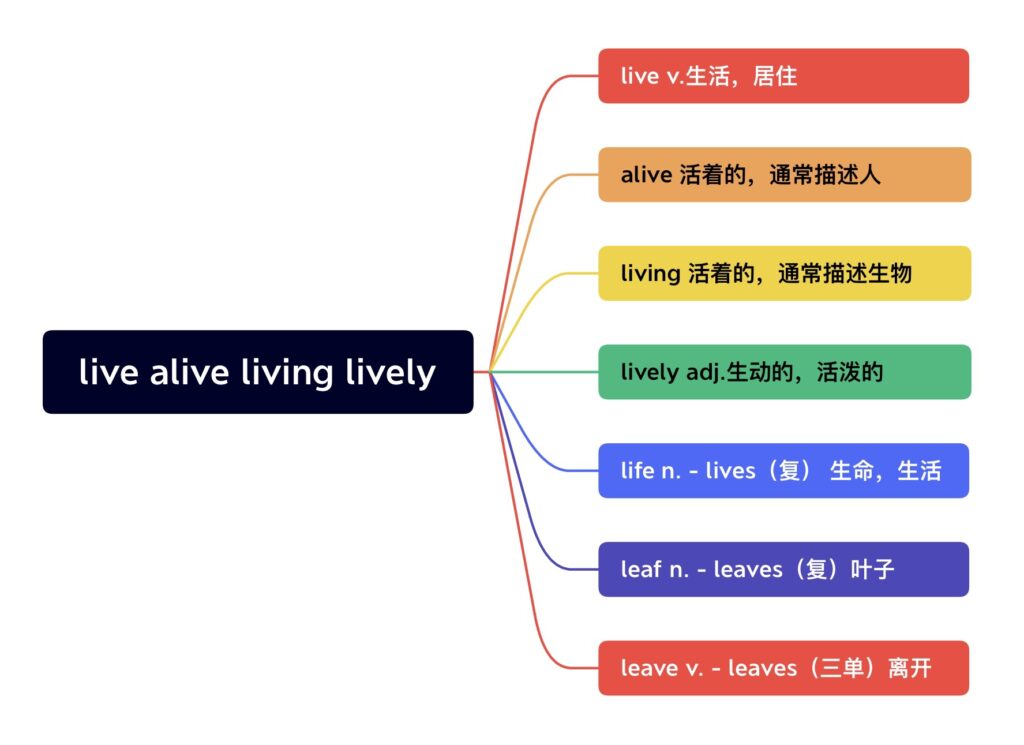
”活着“ live alive living lively

四个 “活着” 的用法 这四个词都与生命、存在和活力有关,但它们的用法和含义略有不同。 live是动词,意思是“生活”,通常用于描述人的生活状态。例如: I live in New York.(我住在纽约。) He lived a long and happy life.(他度过了漫长而幸福的一生。) alive是形容词,意思是“活着的”,通常用于…
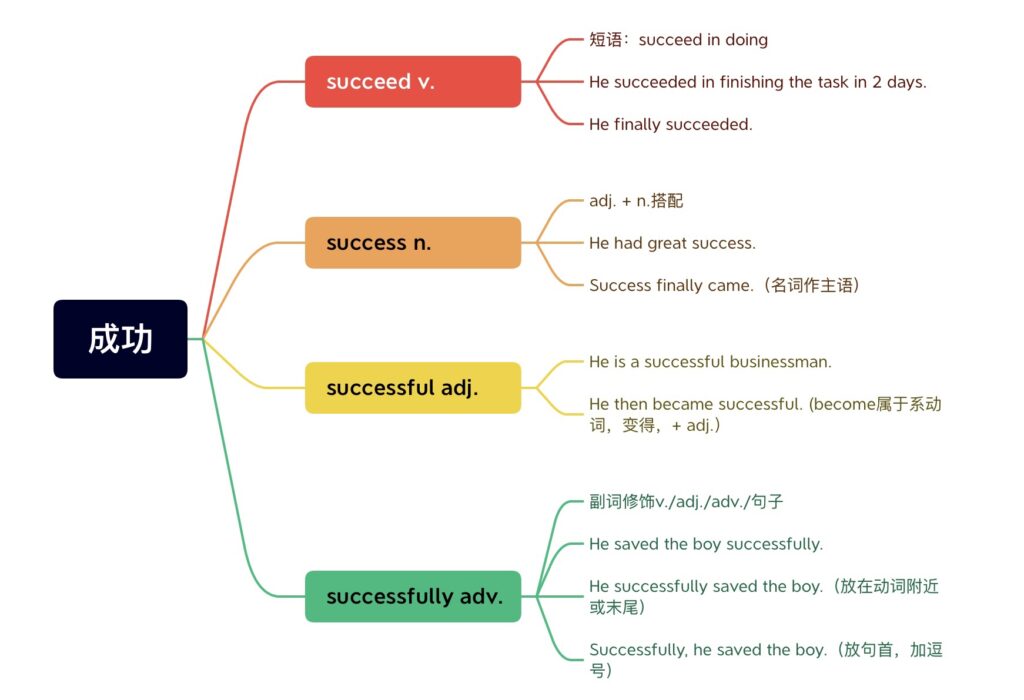
”成功“ succeed, success, successful, successfully

四个“成功”的用法 这些词都与成功有关,但它们在用法上略有不同。 Succeed是一个动词,意思是“成功完成某事”或“达成某个目标”。例如: She worked hard and finally succeeded in passing the exam.(她努力学习,最终成功通过了考试。) The company's new product l…
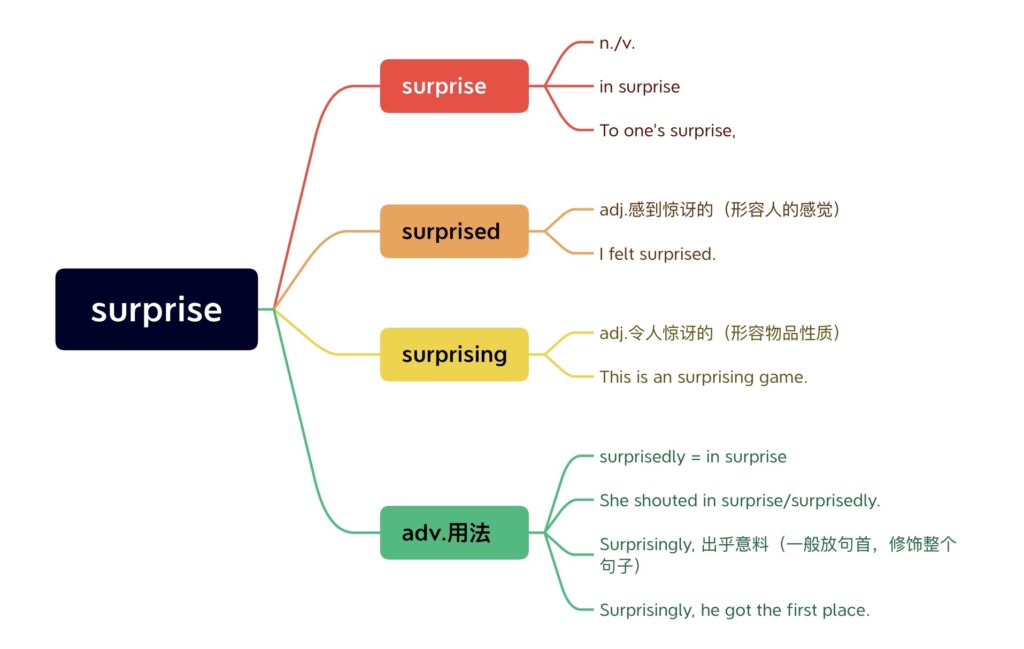
高频词-Surprise!

含义 surprise是一个动词,意为“使惊奇、使惊讶”,也可以作名词,意为"惊讶、惊喜",是一个情感词汇。在交流中,我们可以用它表达强烈的情感和感受,通常表示感到超出预期或不可预测的事情或事件。 常见短语 1. take by surprise 收到意外的惊喜或惊吓例句:I didn't expect to see you here. You r…
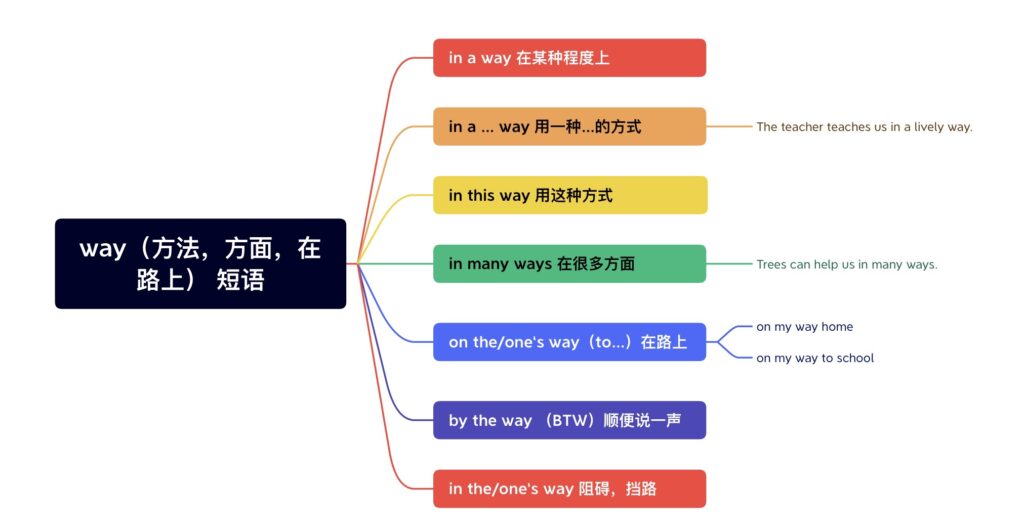
way的短语辨析

way的含义 Way的基本含义是“方向”、“方式”、“途径”。在英语中,它有很多常见的短语,下面将介绍一些常见的用法。 way的常见的短语含义 1)by the way 顺便说一下;例句:By the way, have you seen the new movie yet? 2)in a way 在某种程度上;例句:In a way, I am …
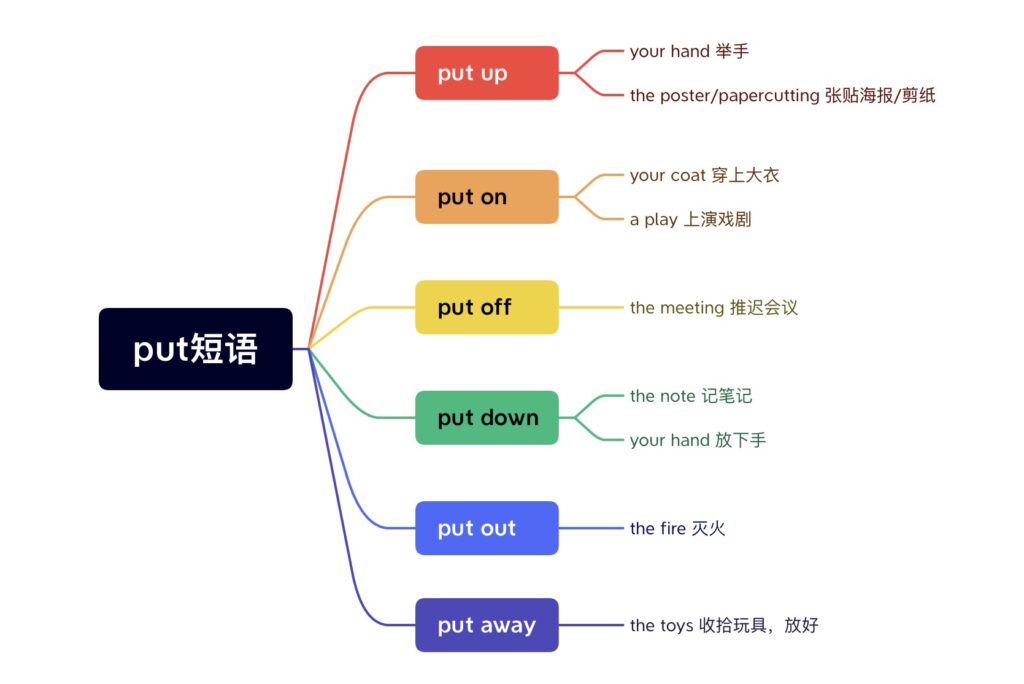
Put的短语辨析

Put的含义 Put是一个常见的动词,主要含义为“把某物放在某处”、“表达”、“说话”等。 Put的常见短语的含义 - Put on:穿上/戴上/上演;搭配例句:I need to put on my coat before going out.(我得先穿上外套再出门。)The theater company put on a fantastic …
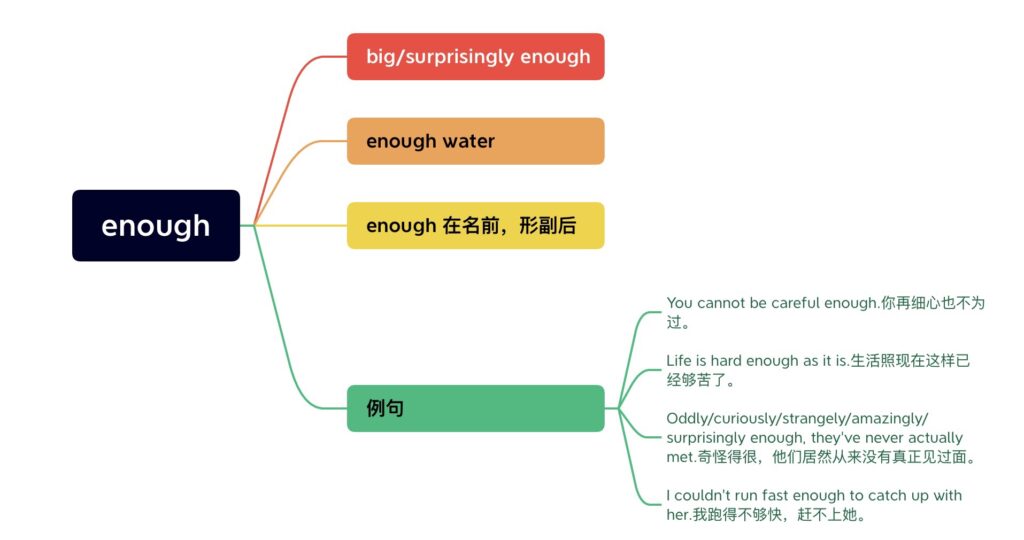
enough的用法

enough的基本用法 一、engouh 与形容词或副词的搭配1. adj./adv. +enough- She is smart enough to solve this problem.- The water is hot enough to make tea.- He runs fast enough to win the race. You…
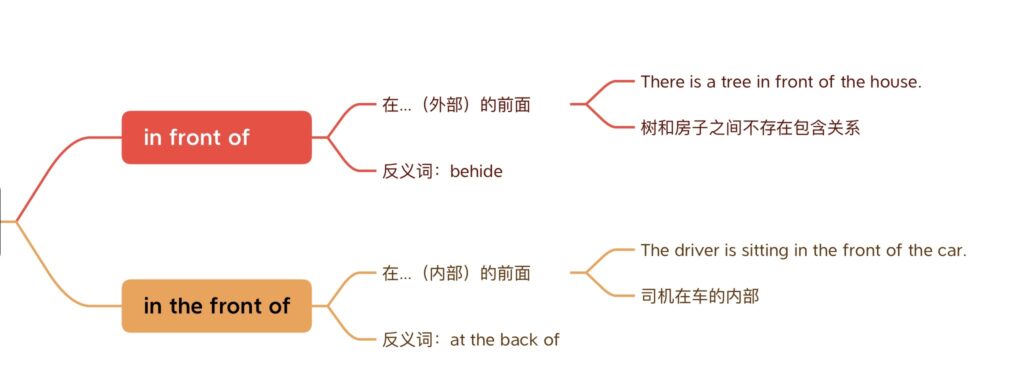
前、后-如何表达?
"在前面"和"在后面"的定义 "在前面"通常意味着在某样东西或某人的前面,表示位置或时间顺序。而"在后面"则通常意味着相反的位置或时间顺序。在某些情况下,这些表达可以表示物品或事物的优先级。 "在前面"的用法 1. 表示位置关系,如: The car is in front of the garage.(汽车在车库前面。) 2. 表示时间先后,如:…